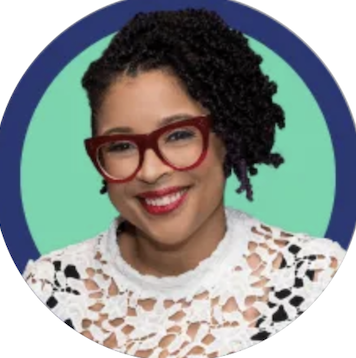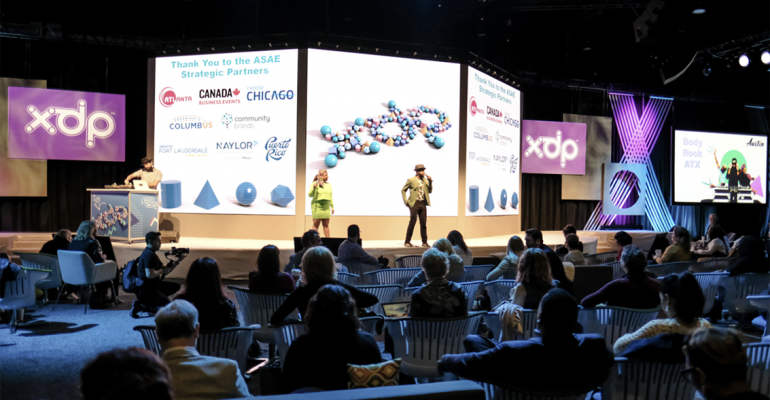We can’t all design events resembling SXSW and TED Talks, can we? There’s that pesky budget thing, of course.
On the other hand, it’s not a foregone conclusion that your general sessions must be simply a variation of last year’s version: an executive report, an awards presentation, a discussion panel, and a keynoter following each other on a wide stage with video screens on either side.
During a session at the American Society of Association Executives’ most recent annual meeting, Rhonda Payne, CEO of Flock Theory, a learning-strategy and event-design firm, presented some thoughts on developing creative general-session alternatives. The name of her session: “Main-Stage Magic: Captivating Your Attendees."
To start, Payne spoke about another ASAE conference she worked on some years back, called Xperience Design Project. XDP’s goal was to use unique session designs to better engage the audience—which was made up of planners who could then do similar things within their own events.
For instance, one of the approaches that XDP used was simultaneous keynoters. Executed by Krista LeZotte, CMP, CSEP, formerly ASAE's associate director of meeting operations & special events, that session had three presenters on the stage at one time. Each spoke from a different part of the stage, and attendees used headsets to tune in to their presenter of choice. If attendees wanted to hear what another presenter was speaking about, they simply changed the audio channel.
LeZotte also designed the session with a variety of seating options—high-top tables and chairs, L-shaped couches, and others—in different areas in front of the stage, not only helping engagement but also allowing attendees with physical difficulties to sit close to the stage in comfort. Further, audience-response systems and other interactive elements boosted attendee engagement.
 If the simultaneous-speaker format isn’t feasible for a group, Payne (in photo) said that using an in-the-round stage “puts people closer to the action, and also lets them see each other’s reactions to what the speaker is saying.” In other words, the audience becomes part of the performance.
If the simultaneous-speaker format isn’t feasible for a group, Payne (in photo) said that using an in-the-round stage “puts people closer to the action, and also lets them see each other’s reactions to what the speaker is saying.” In other words, the audience becomes part of the performance.
More Engagement Ideas from Payne
• Experts who know too much must be made to edit their delivery for maximum effect: 5 takeaways, 4 lessons, etc., rather than “conducting a speedy trip through the entirety of a topic, which is something nobody will remember,” said Payne.
• To reinforce themes and lessons, a planner could have each presenter build on what the last speaker talked about. One example: each speaker presents a different part or perspective of a case study using video clips or other technology.
• Payne’s six drivers of truly memorable experiences are:
1. The unexpected: surprise and delight
2. Hitting on emotions
3. Immersion, such as “sound baths” (for more detail, see "An Example of Immersion," below)
4. Attention to detail: small, thoughtful touches with lighting, images, sound, pacing, and build-up
5. Personalization to the audience’s values, needs, and mission
6. Delivering awe, wonder, playfulness, or “whatever else will sweep people up in the moment.”
Sidebar: An Example of Immersion
An October blog post from Encore, the event-production giant, highlighted the engagement benefits of “sound baths” when used during main-stage sessions.
Here is their take:
Imagine you’re in a general session. You hear a train whistle in the distance. The sound grows louder and closer to your seat, until a train ‘appears’ on the stage’s LED screens. When it departs, it sounds as if it really is leaving, and you catch yourself turning your head to look as it rolls off-screen.
With a sound bath, overhead speakers move sound from one side of the room to another, creating an immersive audio environment.
This dynamic technique envelops the audience in sound, creating a sense of movement, presence, and depth that enhances the storytelling experience.
Such moments can strengthen the way planners create emotional connections.





